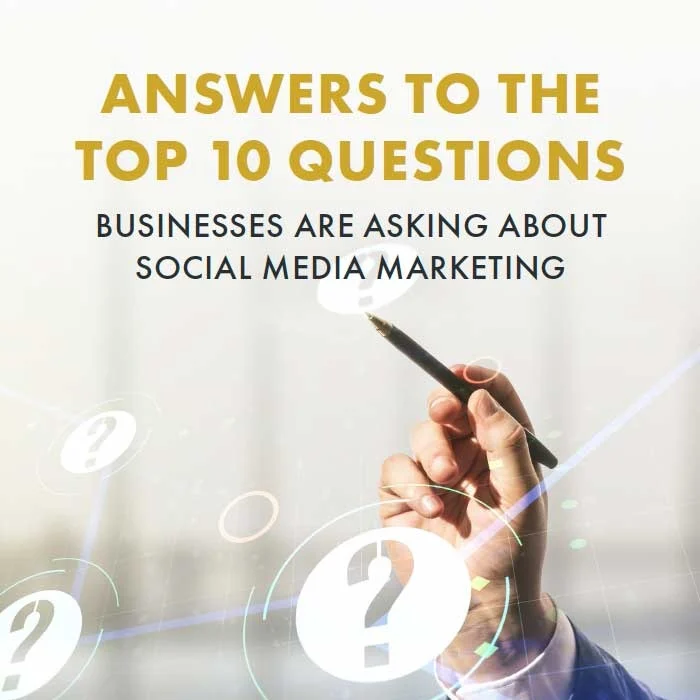No doubt your business has heard some buzz about blogging. You’ve seen other businesses doing it (hopefully not your competition!). You’ve likely read and found value in others’ blog posts, as nearly 80% of people identify as blog readers. Maybe you’ve even dabbled in blogging yourself. It’s also possible that you’ve seen some pretty compelling statistics about business blogging, such as these:
- Marketers that prioritize blogging are 13x more likely to see a positive return-on-investment.
- Businesses that blog generate 67% more leads than businesses that don’t.
- When businesses consistently publish blog posts, they see 5 times more traffic and 4.5 times more leads.
It’s obvious that business blogging is an essential component of any solid marketing strategy in today’s digital era. But blogging “just to be blogging” will never allow businesses to be a part of one of the positive statistics mentioned above. There are certain vital components to every business blog that must be implemented in order to achieve blogging’s ultimate goal: Lead generation.
Below, let’s take a look at the top three ways to make sure your blog will turn website visitors into leads.
1. Write to the Right Audience.
Website visitors are highly more likely to turn into leads if they are the “right” audience. That is, they are already interested in your industry’s products and services. Chances are, most website visitors will organically find your business blog because they are actively searching online, trying to educate themselves concerning a problem that they are facing.
This means that you want to make sure your business is writing each and every post with this ideal customer in mind, otherwise known as a buyer persona. Develop blog topics with this persona in mind. Ask yourself: What would someone who is in need of our services be searching on Google? What sorts of keywords would our buyer persona be using to find information? What kinds of questions are often asked about our products and services that we could write a blog post to address?
Find the answers to these questions by conducting quality buyer persona research, keyword research, and even brainstorming with your internal team to gather even more ideas concerning who your ideal customer is. Spending time identifying your business’ buyer persona, then strategically developing content to reach that “right” audience is key to attracting quality website visitors who are highly likely to convert into leads.
2. Include Calls-to-Action.
As you’re reading this post, you may be asking yourself: How does a website visitor convert into a lead anyway? We’re glad you brought that up! Calls-to-action, or CTAs, are the necessary bridge that allows your visitor to cross into lead territory. CTAs are linked graphics or text that lead your blog readers to a landing page designed to collect their information in exchange for more content. This information exchange produces a lead that your marketing and sales team can now follow up with.
Here’s an example: Let’s say you are a lawyer at a local law firm. Your business publishes a blog post on the top five reasons that consumers should hire a lawyer after a car accident. Your reader is intrigued by your post, but wants more information before deciding whether or not they are completely sold on the idea. They reach the end of your blog post where they see a graphic urging them to click for additional material on how the process would go, should they hypothetically choose to proceed with hiring a lawyer.
They click on this CTA which takes them to a landing page. There, they enter their name and email in order to download their free copy of your in-depth content. At this point, a viable lead is born! Your business may now create a contact to store in your database that your marketing team can continue to nurture and your sales staff can eventually reach out to for follow-up purposes.
It’s easy to see that without a CTA, a blog post is simply a dead-end. Ensure that your blog will convert visitors into leads by including a CTA in every blog post you publish. That way, you’re leading your visitors to additional, educational content that is furthering them through the buyer’s journey and bringing them closer to making an informed purchase.
3. Publish Consistently.
As the statistic above mentioned, businesses that consistently publish blog posts enjoy 3.5 times more traffic and 4.5 times more leads. This means that it isn’t enough to write one or two blog posts per month and hope that that will be enough content to resonate with your buyer persona and generate leads. Every time that your business publishes a blog post, you are adding a new website page to the Internet. That means that you’re giving your business even more opportunities to be found in Google searches and to become an authority, or industry expert, on a topic.
It’s obvious that blogging frequently and consistently is a best practice that your business cannot ignore. So, the question becomes: How much blogging is enough? Well, the answer varies. The golden rule that we recommend follows this logic: Blog enough content that you’re not sacrificing quality for quantity. Always publish intentionally-written, educationally-sound blog posts that offer something tangible to your readers. Don’t simply push out 16 subpar posts for the sake of hitting a certain number each month.
If your business is just getting started with its blog, we recommend publishing a minimum of six, quality blog posts per month. And don’t forget about premium content - such as eBooks, infographics, webinars, videos, and more - as these pieces of content are the key to generating leads as we discussed above.
So, there you have it! In order to make sure that your business has a blog that’s converting website visitors into leads, be sure to practice the above best practices: Write to the right audience, include calls-to-action in your posts, and publish consistently. Do that and you’ll be on the fast track to an increase in website visitors and eventually, new customers!



.webp)






















































